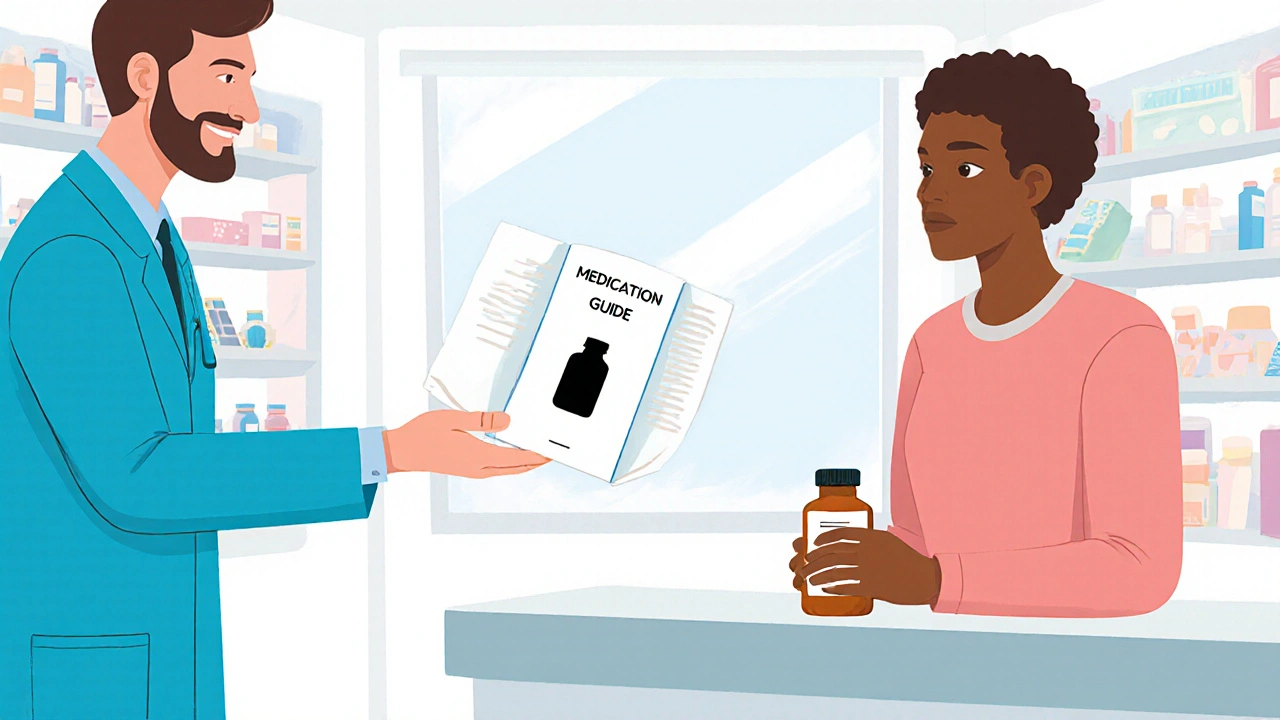
Medication Guides Explained: Why They’re Critical for Patient Safety
Learn what Medication Guides are, why the FDA mandates them, and how they protect patients from serious drug risks. Get clear steps to use these guides effectively.
When you take a pill, you’re not just swallowing chemistry—you’re trusting someone to explain the risk communication, the process of sharing information about potential harms and benefits of medical treatments in a way people can understand and act on. Also known as health risk messaging, it’s what turns a clinical trial result into a real-life choice. Too often, this gets lost in jargon. A patient reads "increased risk of renal impairment" and thinks, "Does that mean I can’t take this?" Without clear context, they might stop the medicine—or ignore the warning entirely.
Risk communication isn’t just about warning labels. It’s about how doctors, pharmacists, and even drug companies explain things like: how common a side effect really is, what it feels like, and whether the benefit outweighs the danger. Take creatine and kidney function. The supplement can raise serum creatinine, which looks like kidney damage on a lab test—but it’s often just a false alarm. Good risk communication tells you that difference. Same with Dostinex: it can cause dizziness or nausea, but for someone with prolactinoma, those risks might be worth it. The key isn’t hiding the risks—it’s putting them in perspective.
When people don’t understand risk, they make bad calls. They avoid needed meds because they fear rare side effects. Or they ignore serious warnings because the language feels too distant. That’s why risk communication matters in every corner of pharma—from the FDA’s black box warnings to the tiny print on a Cialis bottle. It’s also why support groups for COPD patients work: they turn abstract risks into real stories. Someone says, "I had trouble breathing after this drug," and suddenly the risk feels real, not just a statistic.
Look at the posts here. You’ll see how risk communication shows up in unexpected places. Bimatoprost changed beauty standards—but did users know it was originally for glaucoma? Placentrex therapy claims healing power, but what’s the actual risk of infection? Even buying generic metformin online ties into risk: if you don’t know how to spot a fake pharmacy, you’re not just saving money—you’re risking your life.
This isn’t about scaring people. It’s about giving them the truth in plain language. Whether it’s hyponatremia in athletes, liver damage from duloxetine, or how to safely dispose of lisinopril, the goal is the same: help people decide without confusion. You’ll find real examples below—how different drugs are explained, how side effects are weighed, and what happens when the message goes wrong. No fluff. Just what you need to understand the risks—and make smarter choices.

Learn what Medication Guides are, why the FDA mandates them, and how they protect patients from serious drug risks. Get clear steps to use these guides effectively.